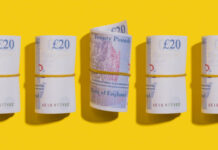Markets
The Fed as expected delivered ‘a hawkish shift’. Inflation officially is no longer considered transitory. It currently settles at elevated levels. The Fed left the target rate unchanged at 0-0.25%, but with inflation exceeding the 2% target for some time and the labour market improving further, it was appropriate to reduce asset purchases at double current pace even as Omicron and other variants remain a risk. From January on the Fed will buy Treasury holdings by at least $40 bln p/m and mortgage back securities at $20 bln p/m. Net purchases will end in March. Inflation becoming the priority also caused a significant recalibration in the December projections. The median PCE inflation for this and next year is upwardly revised to 5.3% (from 4.2%) and 2.6% (from 2.2%) respectively. The unemployment rate for 2022-2024 is seen at 3.5%, below the long term equilibrium. Powell at the press conference reiterated that the Fed is looking at a broad range of labour market indicators. Even so, current and projected improvement made governors conclude that 3 rate hikes next year and in 2023 and 2 additional hikes in 2024 are feasible. According to Powell, the lift-off might start soon after the end of net asset purchases. The Fed discussed the balance sheet, but no decisions have been made. In a first reaction US yields rose about 5 bps, but the move was reversed during the press conference. At the end of the day, US yields rose between 0.63bps (2-y) and 3.2bps (30-y). The rise in inflation expectations outpaced the setback in real yields. So, markets apparently don’t see the Fed’s shift as overly hawkish at this stage. This was also the conclusion in FX and for equity investors. US equities rose between 1.08% (Dow) and 2.15% (Nasdaq). The DXY index reversed intraday gains to close modestly lower at 96.51. EUR/USD intraday tested the 1.1225 area, but close in neutral territory just below 1.129.
In the slipstream of yesterday’s Fed meeting, multiple central banks including the ECB, the BoE, the Swiss National Bank, the Norges and Turkish central bank (CBRT) all will decide on monetary policy. The CBRT is expected (feared) to cut interest rates further. For the SNB markets look out for the SNB’s assessment on recent CHF strength. The Norges bank will likely continue its gradual normalization (+0.25%). The main dish will be served by the Bank of England and the ECB. The BoE in November abstained from a lift-off as it wanted to be sure on a smooth functioning of the labour market after the end of the furlough scheme. Labour reports were strong and inflation sooner than expected crossed 5.0%. If the BoE wants to preserve its aura of credibility and consistency, it is time to at least take the symbolic step and raise the policy rate to 0.25%. The mission of the ECB is much more difficult and complicated by internal political debate. Even the heart of the matter, the inflation forecast, is subject to debate. The 2022 forecast will be raised well above 2.0%, but a return to/just below target in 2023 and 2024 might leave the debate open on (the pace of) normalization. The ECB in any case hasn’t much time left to set the framework for post PEPP asset purchases. A flexible, degressive APP with a short-term evaluation (e.g. quarterly) looks preferable to cope with rising inflation risk. However, the ECB continues facing claims to keep conditions equally easy across the EMU. Lagarde has some work to do in convincing markets that inflation is becoming its priority. This will also be a key factor to halt the ongoing erosion of the single currency’s value.
News headlines
The Australian labour market had a bumper November. Employment grew a record-breaking 366.1k after declining 56k in October. Consensus estimates were more modest around 200k. However, the surge was not driven by the creation of new jobs. Instead many employees who had been counted as not employed during extended lockdowns returned to work after covid restrictions eased. This caused the participation rate to jump from 64.6% to 66.1%. Still the employment rise was big enough to trigger a steep decline in the unemployment rate from 5.2% to 4.6%. AUD/USD knee-jerk rise died out quickly as markets took the nuances into consideration. It’s currently trading at 0.715. RBA governor Lowe before the data release outlined three options for its bond buying programme (currently A$ 4bn per week). Two of them included tapering and then either end QE in May or hold a review. A third, and with the latest labour market report the more likely option, is to cease purchases already in February. On rate hikes, Lowe repeated that conditions probably won’t be met in 2022.












